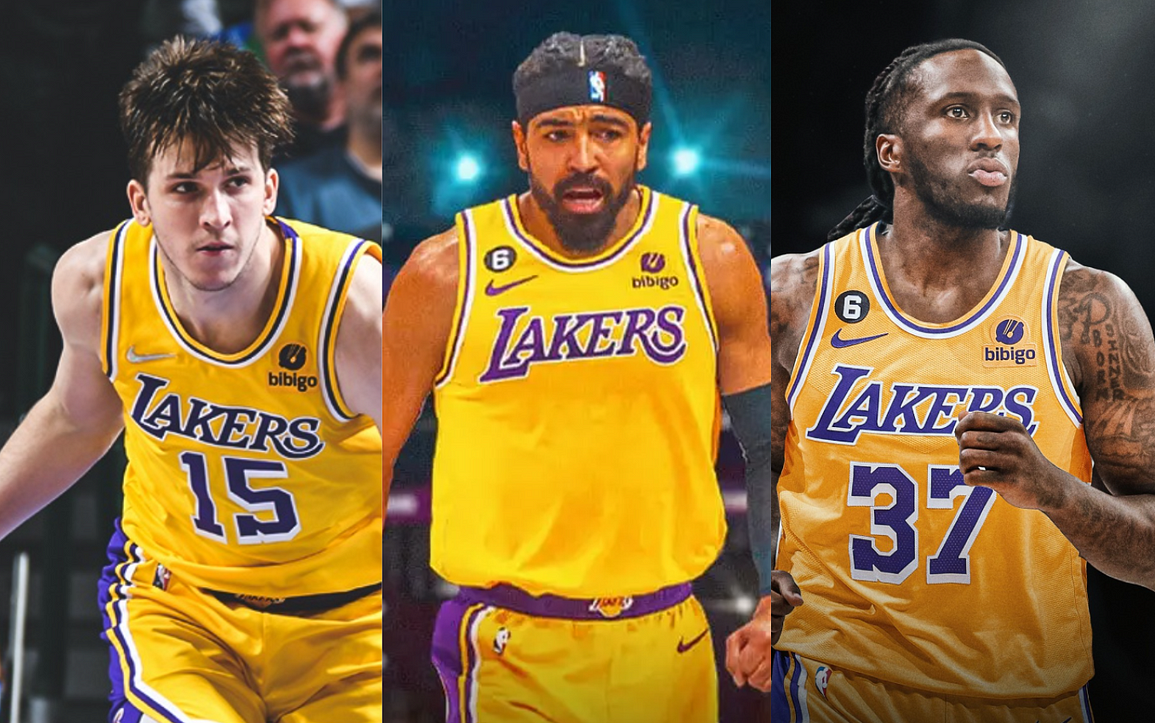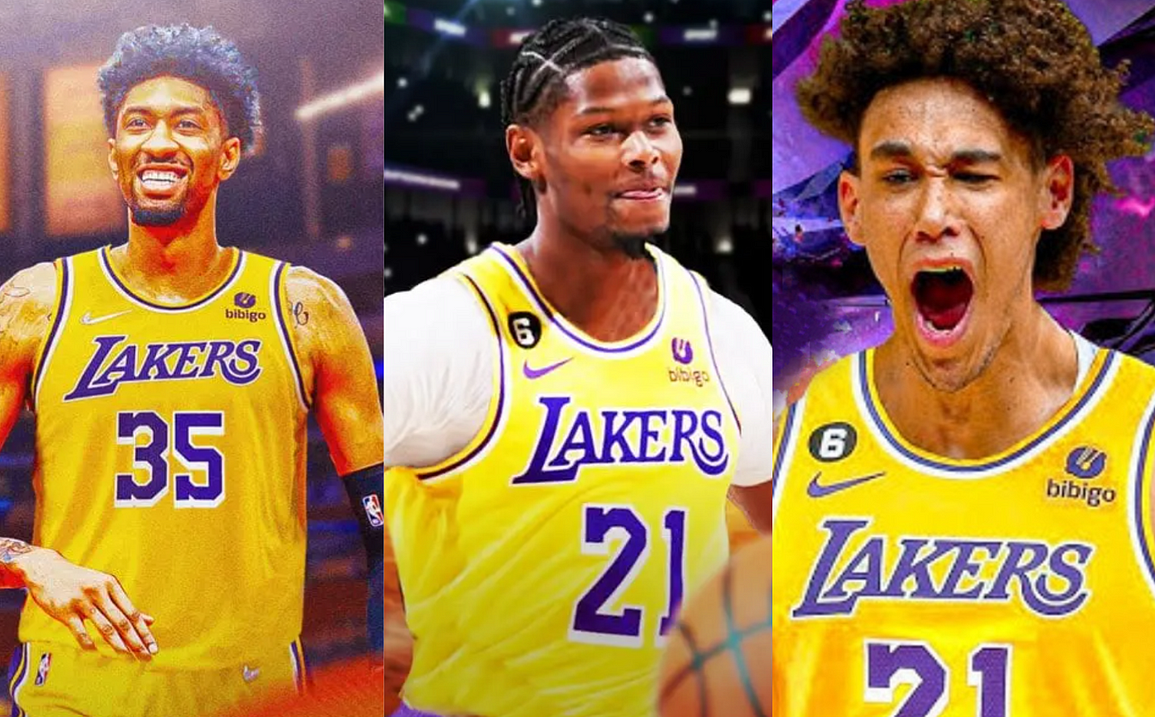After disastrously trading for Russell Westbrook, Rob Pelinka’s pulled off a dramatic comeback by prioritizing fit, upside, tradability, and continuity to transform the Lakers from a lottery team to a championship contender.
The problem that’s haunted the Lakers the last three years was not that Pelinka didn’t know what the right moves to make were. He just didn’t have the will and resolve to stick to his principles. The last six months, he has. Every move Rob’s made from the last trade deadline through this offseason has been about putting together a deep and diverse roster with players who meet his four guiding principles of fit, upside, tradability, and continuity.
When you’re general manager of the Lakers, the pressure is intense not only to hit a homerun every time up but to hit a game-winning, grand-slam homerun. We saw how that worked when we traded for Russell Westbrook. Since then, however, Rob has been impressively patient and consistent. While there’ve been disappointments like Beasley’s inability to fit and Dlo’s and Vando’s playoff vulnerability, Rob’s essentially hit a grand-slam homer.
Pelinka’s grand makeover not only has elevated the Lakers to being one of the top six favorites to win the 2024 NBA Championship but also positioned them perfectly with a plethora of coveted players on tradable contracts. Pelinka may have some tough decisions to make come the trade deadline. Unless expectations are not met, the Lakers are more likely again to make moves to improve on the margins than to foolishly chase a third superstar.
Let’s take a closer look at how Rob Pelinka used fit, upside, tradability, and continuity as his guiding principles to build a deep, diverse rotation that transforms the Lakers from a lottery team to a championship contender.
1. Fit

The first personal quality Rob Pelinka and the Lakers’ front office looked for when evaluating trade and free agency candidates was how they fit alongside LeBron James, Anthony Davis, and the rest of the team’s roster.
It doesn’t take a rocket scientist to figure out what it takes to fit alongside two superstars like James and Davis. Even the Lakers understand they need players who’ve proven they can be effective with and without the ball.
The other players on the court with LeBron and AD have to be able to make the inevitable open shots they’ll receive and do the small team-first things like passing, rebounding, and defending that championships require.
For the Lakers, the player who’s the best fit alongside James and Davis is Austin Reaves, the early favorite to win MIP next season after his breakout play for the Lakers in the playoffs and Team USA in the FIBA World Cup.
The Lakers’ priority was to avoid having to match a $100 million offer for Reaves, who’s a restricted free agent, which they were able to do by scaring off suiters and re-signing him to a below market 4-year $56 million deal.
Fit was also the clearly why the Lakers used their NT MLE to sign backup point guard Gabe Vincent to a 3-year $33 million deal and their BAE to sign backup small forward Taurean Prince to a 1-year $4.5 million contract.
Vincent and Prince were perfect examples of Pelinka smartly prioritizing fit in choosing whom to sign with his prized MLE and BAE. Like Reaves, both perfectly fit the 3&D model needed to optimize James and Davis.
Rob Pelinka and the Lakers learned their lesson with Russell Westbrook and prioritized fit as the first quality when choosing which players to bring back or sign to transform them from a lottery team to a title contender.
2. Upside

The second personal quality the Lakers prioritized in building their current roster is upside. Rather than surrounding James and Davis with older vets, Pelinka complemented his superstars solely with players in their twenties.
Amazingly, the average age of the 15 players Pelinka has surrounded James and Davis with is 23.9-years old. Even with 38-year old James and 30-year old Davis included, the average age of the Lakers is still just 25.1-years old.
The Lakers are the 15th youngest team in the league with greater upside than the Clippers, Bucks, 76ers, Warriors, Suns, Raptors, and Heat, the seven oldest teams in the league with average team ages over 27.0 years.
With a player development oriented coaching staff, L.A. is committed to surrounding James and Davis with young players who have the upside to grow, develop, and get better, especially playing with a star like LeBron. They’re parlaying their success with low risk, high reward players like Malik Monk, Lonnie Walker, and Dennis Schroder and hoping to strike gold again with projects Christian Wood, Cam Reddish, and Jaxson Hayes.
The Lakers have done a great job establishing themselves as the mecca for low risk, high reward players looking to redeem their games and revive their brands playing in the bright lights of Los Angeles with Bron and AD.
The Lakers see Wood’s upside as a potential starting center in a two-bigs lineup with Anthony Davis, Reddish’s ceiling as their long coveted starting small forward, and Hayes’ future as a dominant two-way backup center.
Pelinka’s transformation of the Lakers’ roster surrounding James and Davis to prioritize upside has been nothing short of a miracle. The Lakers clearly have greater roster upside than all the other championship contenders.
3. Tradability

Rob Pelinka’s third guiding principle in building a championship roster has been tradability, making sure that every player they sign or trade for not only possess a coveted NBA skillset but also has a team friendly contract.
Unlike last trade deadline, when the Lakers were desperate to trade Russell Westbrook, this Lakers’ roster has nothing but players whose games have solid value as well as untapped upside and contracts are easily tradable.
The Lakers may not have multiple first round picks to trade but they do have a plethora of quality trading chips in the form of solid talented young players who have legitimate NBA upsides and team friendly contracts.
How the Lakers do the first half of the season will determine what they do at the trade deadline. Chances are they will make moves to continue to upgrade the roster on the margins rather than trying to add a third star. Trading for a center like Myles Turner, a volume 3-point shooter like Gary Trent, Jr., or legitimate bigger 3&D starting wing like O.G. Anunoby would be more likely than a blockbuster deal for Trae Young or Zach LaVine.
How players perform the first half of year will also impact their tradability at the deadline. Most observers expect any trade the Lakers complete to include D’Angelo Russell, who waived his ‘no trade’ rights when re-signed.
Right now, Austin Reaves is probably untouchable as are LeBron James and Anthony Davis and Jarred Vanderbilt just signed a new 4-year $48 million contract, which gives him and the Lakers time to grow his game and value.
Besides enjoying a deep and diverse roster of players that can win games, the Lakers also have an impressive portfolio of tradable players to take full advantage of emerging opportunities to upgrade the roster at the deadline.
4. Continuity

Last but not least, Pelinka’s fourth guiding principle for upgrading the Lakers’ roster from lottery team to championship contender is continuity. The Lakers have committed to establishing continuity going forward.
L.A. returned seven players from last year’s team, extending Anthony Davis, D’Angelo Russell, and Jarred Vanderbilt and re-signing Austin Reaves and Rui Hachimura to go along with LeBron James and Max Christie.
L.A. also signed five free agents in Gabe Vincent, Taurean Prince, Jaxson Hayes, Cam Reddish, and Christian Wood and two draft picks in Jalen Hood-Schifino and Maxwell Lewis for a total of seven new players.
That gave the Lakers an extremely deep and diverse 14-player roster, one roster spot that they will likely keep open for buyout candidate, and three rookie two-way players in Colin Castleton, D’Moi Hodge, and Alex Fudge.
7 players (Davis, Reaves, Hachimura, Vincent, Vanderbilt, Hood-Schifino, Lewis ) have long-term deals, 5 players (James, Russell, Wood, Reddish, Hayes) have 1+1 deals, and 2 players (Christie, Prince ) have 1-year deals.
Since winning their 17th NBA championship in the bubble in 2020, the Lakers got into the unfortunate habit of essentially turning over their entire roster every offseason and essentially killing any continuity.
With Pelinka committing the franchise to continuity, the Lakers can continue to build a dynamic and sustainable championship caliber roster with 9 to 12 young core players locked up in team-friendly contracts.
Overall, Pelinka’s fourth roster building guiding principle is continuity, which gives the Lakers a minimum of 8 and maximum of 14 players who could come back to defend their 18th and win their 19th championship.